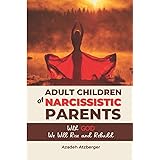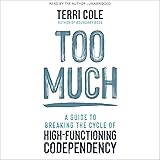Have you ever found yourself scrolling mindlessly, hours slipping away, only to wonder how you got there? Perhaps you picked up your phone to check a quick notification, and suddenly an hour or two has vanished into the digital ether. It’s a common experience in our hyper-connected world, and it speaks to a growing concern: internet overuse, which can sometimes evolve into a more serious issue of internet addiction. As Assoc. Prof. Onur Noyan highlights in the video above, recognizing the signs and fostering personal awareness is the crucial first step.
Understanding Internet Addiction: More Than Just Lots of Screen Time
Many of us spend significant time online for work, education, or connecting with loved ones. Yet, when does this routine use cross the line into something more problematic? As Professor Noyan points out, internet addiction isn’t just about the sheer volume of time spent online; it’s also about how we use that time and, crucially, the specific sites or applications we frequent. Think about it: checking emails for work is different from spending hours glued to social media, even if the total screen time might be similar.
The core of this issue lies in our motivations. Are you turning to the internet as a default reaction to boredom, or as a quick fix for feelings of unhappiness? Professor Noyan encourages us to ask ourselves tough questions, such as, “Am I using the internet when I’m bored or when I want to be happy?” and “Did I start to use the internet more when I wanted to spend less time on it?” These questions cut to the heart of behavioral patterns that can signal an unhealthy reliance on digital escapism.
Recognizing the Subtle Signs of Internet Overuse
While outright addiction can be severe, many people experience milder forms of internet overuse that still negatively impact their lives. Identifying these subtle signs early can prevent escalation. Here are some indicators that your internet habits might be leaning towards problematic territory:
- Loss of Control: You intend to spend only a few minutes online but find yourself there for much longer.
- Preoccupation: You constantly think about your next online session, even when engaging in other activities.
- Escapism: You use the internet to avoid real-life problems, stress, anxiety, or boredom. This is a key point Professor Noyan emphasizes.
- Tolerance: You need to spend increasingly more time online to achieve the same level of satisfaction or pleasure.
- Withdrawal Symptoms: You feel irritable, anxious, or moody when unable to access the internet.
- Negative Consequences: Your internet use negatively affects your relationships, work, studies, or physical health.
- Deception: You lie to others about the amount of time you spend online.
It’s important to remember that these aren’t diagnostic criteria in themselves but rather red flags suggesting a need for greater self-awareness and potential intervention. An example might be consistently choosing to scroll through social media instead of engaging with family during dinner, or neglecting household chores to play online games. The impact starts small but can grow.
Building Awareness for Healthy Digital Habits
Given that completely excluding the internet from our lives is largely impossible in today’s world, the solution isn’t abstinence. Instead, it lies in cultivating “safe internet usage” – a concept vital to our digital well-being. This involves a proactive approach, starting with understanding our own patterns.
Professor Noyan outlines a clear, three-step process for developing this crucial awareness:
- Be Aware of How Long You Use the Internet: This is the foundational step. Many apps and devices now have built-in screen time trackers. Activating these can provide surprisingly insightful data about your daily and weekly usage. For instance, you might discover you spend three hours on social media daily, an hour more than you estimated.
- Analyze the Periods of Time at Which You Use the Internet: Once you know “how much,” the next step is “when” and “why.” Are you typically online late at night when you should be sleeping? Do you immediately reach for your phone first thing in the morning? Is it during work breaks, or throughout the entire workday? Understanding these patterns can reveal triggers and habits.
- Take Steps to Get Internet Use Under Control: This is where action begins. With awareness, you can set boundaries and implement strategies to reduce addictive behaviors. Perhaps you notice you binge-watch videos for two hours every evening out of habit. Instead, you might decide to dedicate only one hour to entertainment and then read a book or go for a walk.
This process of self-observation and adjustment is critical for moving from unconscious habit to mindful engagement. It empowers you to regain control over your digital life rather than letting it control you.
Practical Strategies for Safe Internet Usage and Digital Well-being
Beyond the self-reflection questions, what concrete steps can individuals take to prevent internet use from becoming addictive? Here are actionable strategies that build on the principles of awareness and control:
Set Clear Boundaries and Schedules
Just as you schedule work meetings or personal appointments, consider scheduling your internet time. This means actively deciding when you will be online and for how long. For example, you might decide that evenings after 9 PM are completely screen-free, or that weekends include a “digital detox” block. This prevents the endless scroll.
- Implement Screen-Free Zones: Designate certain areas of your home, like the dining table or bedroom, as no-phone zones.
- Schedule Digital Breaks: Take regular breaks from screens, even during work. Stand up, stretch, look out a window, or engage in a non-digital activity.
- Use Timers and Apps: Set physical timers or use apps that limit your time on specific websites or social media platforms. When the timer goes off, you stop.
Cultivate Offline Hobbies and Interests
A significant factor driving excessive internet use is often a void that needs filling – boredom, loneliness, or a lack of engaging activities. By investing in real-world hobbies, you create alternative, more fulfilling ways to spend your time. This can be anything from learning a new instrument, gardening, hiking, volunteering, or joining a book club. The more rich and varied your offline life, the less likely you are to fall into digital traps.
For instance, if you find yourself reaching for your phone every time you feel bored, have a pre-planned alternative ready. This could be a book, a puzzle, or simply going for a short walk. Over time, these new habits replace the old ones.
Mindful Engagement with Technology
Instead of mindlessly consuming content, practice being present and intentional when you are online. Ask yourself: “Why am I looking at this?” or “What value does this provide?”
- Curate Your Feed: Unfollow accounts that don’t uplift or inform you. Seek out positive, educational, or inspiring content.
- Turn Off Notifications: Constant pings and alerts pull your attention away from real life. Silence non-essential notifications to reduce distractions.
- Practice Digital Mindfulness: Before opening an app, take a moment to consider your intention. Are you doing it out of habit or for a specific purpose?
Preventing internet addiction is not about demonizing technology; it’s about harnessing it responsibly. By increasing our personal awareness, understanding our motivations, and implementing conscious strategies, we can ensure the internet remains a tool that enhances our lives, rather than diminishes them.











